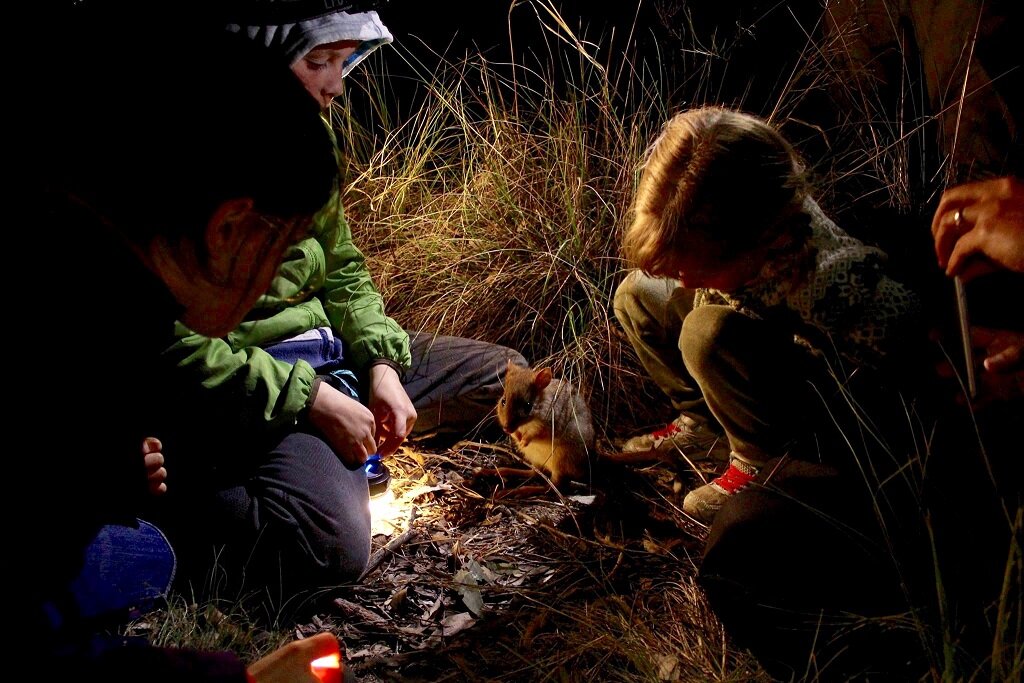Reviving the landscape one species at a time
Conservation is a major undertaking on any scale. When talking about an ecosystem as heavily altered as Australia’s ecosystems, it can seem like an impossible task.
Sometimes restoration is not as practicable as rehabilitation, because a species has gone extinct and introduced a gap in the ecosystem, or a pest species has been introduced that out-competes and preys upon native species. Sometimes measures that were taken in the past, such as the introduction of cane toads and mosquitofish to tackle insect problems, have resulted in a domino effect of horrendous consequences that ultimately proved worse than the original issue.
While these failures can make conservation seem impossible, they are also a part of what makes it essential. The more we learn, the more well-equipped we are to implement positive change. While it is inevitable that one bad decision can set off a chain of negative outcomes, it is also inevitable that one species recovery impacts not just the one species but the entire landscape around it.
Wolves in Yellowstone Park are among the most well-known cases illustrating this idea. For the past ten years, Australian researchers have been producing our own success stories proving that real change can be made with the right approach and resources.
Champion for change
In 2012, thirty-five bettongs moved in to the fenced-off sanctuary in Mulligans Flat.
There were three main concerns behind the decision to reintroduce bettongs, the first being their vital role as ecosystem engineers.
When regenerating a woodland, each step is taken with the next in mind. Bettongs feed primarily on fungi and tubers. By digging and transporting soil micro-organisms, they transform soil health in their habitat.
Not only do bettongs contribute to the overall wellbeing of the woodlands, but by establishing a mainland population, the need to translocate bettongs from Tasmania in the future was reduced. Further along this line of thinking was the need to be prepared for the worst. If Tasmania’s healthy population of bettongs were to unexpectedly decline, the mainland population would act as important insurance for the species as a whole.
Once extinct on mainland Australia, the bettong is now one of the most prolific recovering species in Mulligans Flat Woodland Sanctuary and there is an equally successful breeding program underway at Tidbinbilla to safeguard genetic diversity.
A cryptic species
Bush-Stone Curlews were the next species to make their triumphant return to the ACT.
Famous for the haunting cry that earned them the nickname “murderbird”, Bush-stone curlews had been extinct in Canberra for forty years before a steadfast group of researchers and citizen scientists teamed up to bring them back.
In 2014, twelve individuals were released in the sanctuary. While the current fence was sufficient in protecting the fledgling bettong population from foxes and feral cats, the curlews flew over it. Having evolved to avoid predation through camouflage and staying still, the curlews were unprepared for the heightened senses of the introduced predators.
Over the next two years, researchers used what they had learned and released twenty-one more individuals to much greater success.
Rather than rely on a soft release method alone (releasing the birds into an aviary before opening their door into the broader sanctuary), volunteers took the additional step of clipping the bird’s flight feathers. By the time these had grown back, the birds had settled in. While they occasionally fly out of the sanctuary, the curlews always return, and have once again become a common sight in the area.
Spot them if you can
Zoom in on 2016. A gap has been identified in the food web at Mulligans Flat. Excluding feral predators had enabled native species to thrive, and also highlighted the absence of native predators. Being carnivorous and happy to hunt anything from insects to rabbits, Eastern quolls were selected as prime candidates for addressing the problem.
Eastern quolls (Dasyurus viverrinus) have been extinct on mainland Australia for fifty years. Of the four species of Australian quoll, the Eastern quoll is the only one to come in two coat colours or “morphs”; fawn and black, both with white spots.
Sixteen quolls were brought to Mulligans Flat. To safeguard genetic diversity, half were from Tasmania and half were from a breeding program at Mount Rothwell in Victoria.
Like the bettongs, these quolls have a surviving wild population in Tasmania. And, like the curlews, the initial release of this species reminded project leaders that wild animals have their own agenda which rarely aligns with what researchers have in mind.
Remember the fence keeping out those feral cats and foxes? Not too long after their arrival in the sanctuary, many of the quolls climbed over it and never returned.
Of those that remained, all the females bred within the first few months of their release. This heralded the solution used by researchers to raise the success rate of the second translocation of quolls all the way to 92%.
In 2017 (after upgrading the fence), 13 more quolls were introduced. Six were from Tasmania and seven were from Mount Rothwell. All were females at the end of breeding season, giving them an innate priority to den down as soon as they were released into the sanctuary.
Return to 2021, and the quoll population in Mulligans Flat is robust and acts as both an insurance population for the species and a resource for future reintroduction programs.
What next?
At any given moment, the Mulligans Flat Goorooyarroo Woodland Project is up to some exciting stuff. One ground-breaking study currently underway involves New Holland Mice, a small native rodent listed as “vulnerable” by IUCN.
The project is carried out in unity with ANU’s Fenner School of Environment & Society and has been responsible for bringing both Eastern bettongs and Eastern quolls back to Canberra. With teammates like these, we can’t wait to see how many more goals we kick in the future.



